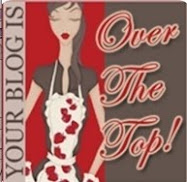Watercolor on 14" x 17" 140 lb. Fabriano Artistico Extra White Hot Press paper
When I first examined the photograph of Borrish, I was struck by the dignity of a hound who had obviously been comfortable in his own fur. Had he been a man, I am quite sure that Borrish would often have been found in a smoke-filled gentleman's club of the kind that used to exist in England. Dressed in his smoking jacket with pipe in hand, scotch and water at his side, he would have been greatly respected when discussing the day's news especially because of his extensive involvement in world affairs. He also would have been a family man, well-loved.
But Borrish wasn't that man. He was the first pet of my friend Barbara, who is a lover of animals, and close companion of Barbara's father, who has also since passed. Borrish was successful because he had loved and was loved in turn, and what more could anyone, man or beast, hope for, after all?
So when Barbara lent me her only photograph of Borrish to paint, I felt honored to have been entrusted with the photo, and wanted to do something more than the sketch she probably envisioned. I also saw it as an opportunity to attempt to stretch my skills. I determined that I would do a Portrait of a Basset Hound as though he were that honored and respected gentleman. I decided that I would do a watercolor on 14" x 17" paper, which was a larger size than I have ever used. (This may sound funny to watercolorists who have done many paintings on half-sheets and whole-sheets, but I have generally painted very small. I wasn't even sure that I could do a wash on such a large size!)
So I made this painting important, and Barbara was thankfully very patient as an inordinate amount of time passed while Borrish taught me my lessons.
As it turns out I learned less about technique than about attitude, which is far more valuable.
Lesson One. Do not become paralyzed by fear of the unknown. The first task was to draw Borrish, and this took some time. I found that although his personality was powerful, and practically human, his features were altogether alien. The proportions had to be just right. So I meticulously drew and succeeded. Then I put Borrish in the drawer because it was time to paint. And I didn't know if I could paint on that size with my little half-pans. I didn't even know if I could cover such a span of white with my masking fluid. There was a lot I didn't know. So all progress stopped. But then one day I decided to proceed. And once I managed to paint and mask the body successfully..
Lesson Two. Do not become paralyzed by fear of a job well-done. ..I had done it fairly well, and did not want to ruin my progress. All that work. The thought that I might destroy the picture and have to start over stopped all progress again. But little by little I managed to pick up the picture. And little by little I progressed. And I did not destroy it any time I painted. I only moved forward. The bottom line is this..
Lesson Three. You can do it. But let's say you cannot. You have to do it anyway so you may as well find out now than delay the inevitable. I could either do it now or later. If I do it later the procrastination will not be useful. So in any project I must face any fear of failure and do it now.
Now to be fair to myself, there were a few other things going on: Watercolors are hard to correct. I was concerned about the potential for interruptions. I do not believe that I would have had these kinds of concerns with an opaque medium like acrylics or oil. But I may be wrong, as this was an internal matter, not the fault of the medium. Also, I have no proper workspace for a project of this size. I used the dining room table. So I would have to wait until I felt that conditions were right.
I've been talking about creating a proper workspace for at least a year, and I am at the point where this must be done soon if I am going to progress. And it will be done soon. (Lesson Three).
For all of my effort and lessons hard-learned, I am proud of this piece, and so share with you the progression in a slideshow. (You can click on the slideshow to see it larger. Click to make it full-screen, then push play. Colors vary because some pictures were by camera, others with my cell phone.)
At the end, I did the foreground and background of this piece with no hesitation and no fear in only a few hours. When I found the background and foreground to be dull, I applied a glaze, a thin transparent gold wash, with confidence, and the result was immediate.
Borrish has taught me lessons posthumously as is only proper for such a fine dog. I am going to remember Borrish in every piece that I do, so that I might progress and be productive. Remembrance of Borrish was the purpose of this piece, after all.















.jpg)

